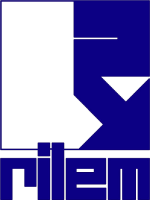Publications
Pro117
Release Process of Core-shell Organic Corrosion Inhibitor in Simulated Concrete Pore Solutions with Different pH Values
Author(s): Yangyang Zhu, Jie Hu and Qijun Yu
Paper category: Proceedings
Book title: 3rd International RILEM Conference on Microstructure Related Durability of Cementitious Composites
Editor(s): Changwen Miao, Wei Sun, Jiaping Liu, Huisu Chen, Guang Ye and Klaas van Breugel
Print-ISBN: 978-2-35158-188-9
e-ISBN: 978-2-35158-189-6
Publisher: RILEM Publications SARL
Publication year: 2016
Pages: 418-426
Total Pages : 9
Language : English
Abstract: It is well known that corrosion of steel reinforcement in concrete is a major cause of concrete deterioration, leading to significant engineering damages and economic loss. The two main reasons of the reinforcement corrosion are carbonation and chloride penetration. Carbonation is a neutralization process of concrete causing a pH drop to about 8–9; chloride can cause pitting corrosion, and the local pH on steel surface will drop to even 5, resulting in severe corrosion propagation. In this study, core-shell organic corrosion inhibitor(COCI) based on polyethylene oxide-b-polystyrene(PEO-b-PS) copolymers with pH-sensitivity was prepared and its release process in simulated concrete pore solution with different pH values were investigated. The release amount of benzotriazole(BTA) reserved in the core-shell corrosion inhibitor was characterized by UV spectrophotometry; the inhibitor size was measured by dynamic light scattering (DLS) tests and morphology alteration was determined by scanning electron microscopy(SEM) combined with energy dispersive spectroscopy(EDS).
Based on dialysis method, BTA was successfully reserved in the prepared core-shell organic corrosion inhibitor. The accumulative release amount of the reserved BTA was significantly lower in the simulated pore solution with a pH value of 13, compared to the pore solutions with lower pH values (11, 9 and 7), indicating that its release process was sensitive to the pH change in the pore solution. Further, compared to the pore solutions with lower pH values, the size of the core-shell corrosion inhibitor was much larger in pore solution with a pH value of 13, which was possibly related to a Na-rich layer formed on the inhibitor surface in this high alkaline environment, evidenced by SEM observation and EDX analysis. This formed layer was believed to responsible for the pH sensitivity of the prepared core-shell corrosion inhibitors. The experiment results indicate that the core-shell corrosion inhibitor in this study can be potentially used for the self-healing of corrosion damage in reinforced concrete.
Online publication : 2016
Publication type : full_text
Public price (Euros) : 0.00
>> You must be connected to view the paper. You can register for free if you are not a member


